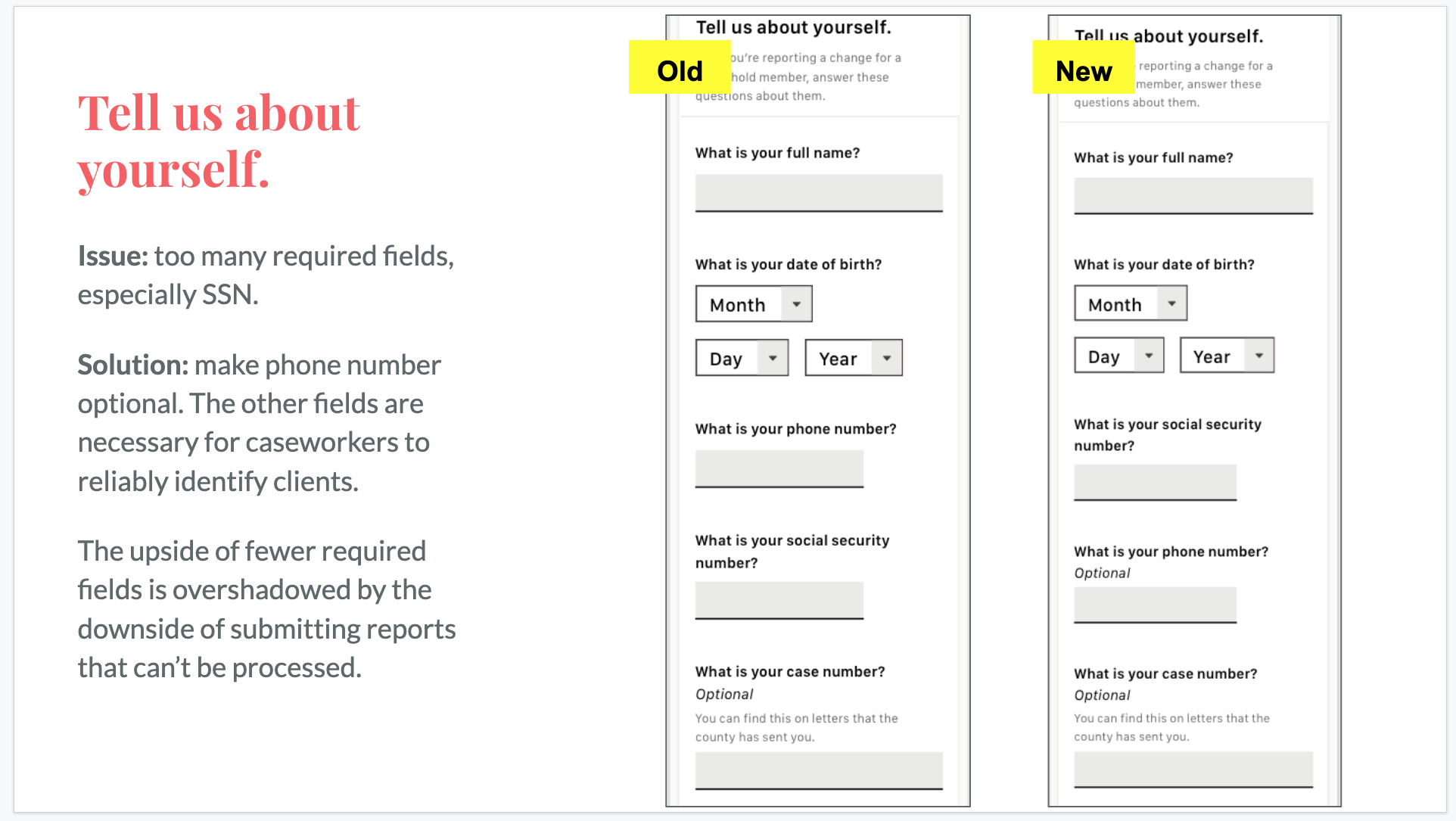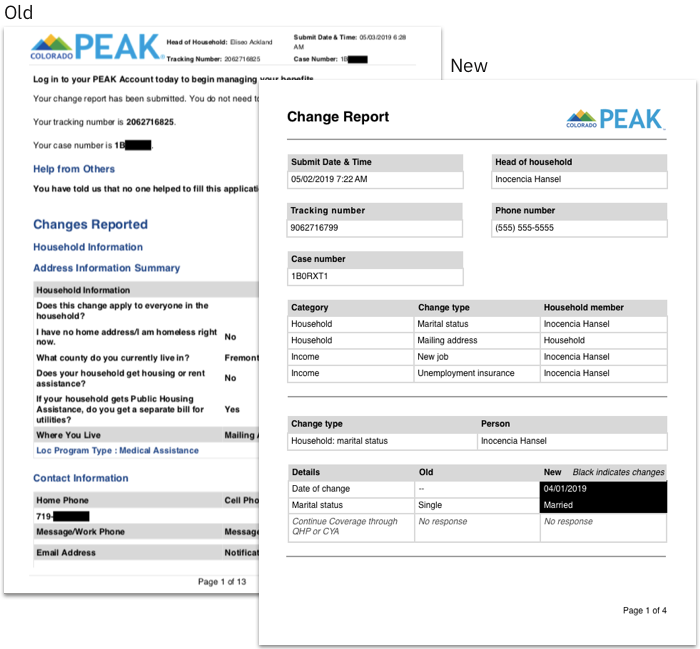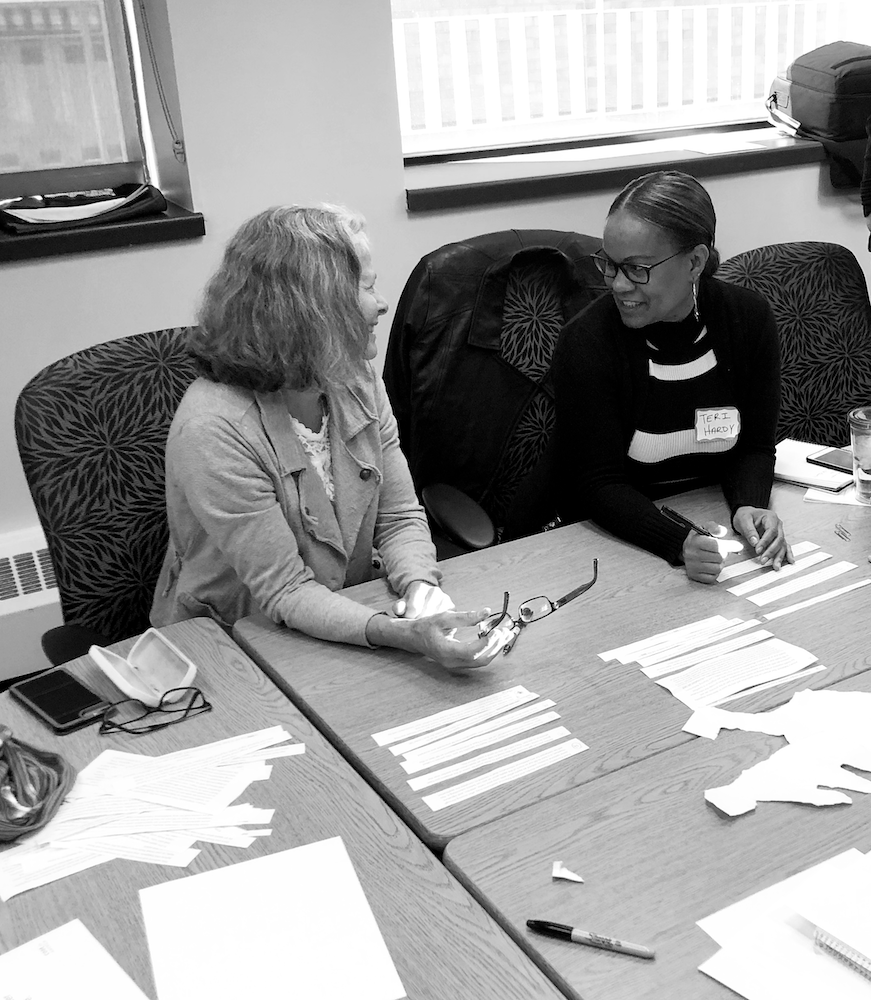Report Changes Colorado
Giving benefits clients the tools to manage their case.
For a pilot program in Colorado, I designed a tool for welfare recipients to report changes in their income.
The state has an online portal for clients to manage their cases, but it was underutilized. Clients had difficulty reporting changes, and caseworkers struggled to process reports that lacked crucial information. Usability issues resulted in many duplicate reports being submitted.
Over the course of a year, I collaborated with a product manager, a team of engineers and research contractors. My contributions included interaction design, copywriting, prototyping, and research. My work built on research conducted during a prior discovery phase.
We developed the product with an Agile approach, starting with a single change type, a single supported program, and support for a single county. In following releases, we expanded to a wider area and added support for additional programs and situations.
I iterated the user flow many times as the product grew in complexity.
I set client expectations up front with an estimated completion time, a timeline of report processing, and a plain language description of change reporting.
The interface is friendly and inviting. Government seals add trustworthiness.
Verifying income changes was a major pain point for clients. Although caseworkers were willing to accept collateral contacts (the name of someone who can vouch for the change), the state’s existing tool had no way to collect this information.
I designed a collateral contact flow and found that given the chance, clients were more likely to submit this information than traditional verification documents.
Although we had run the usual usability tests on our product, I wanted to more fundamentally understand users’ mental models of reporting a change.
I designed a series of prototypes embodying three different approaches. Collaborating with a researcher, I had clients rate them on a number of metrics related to usability, confidence, and whether it felt overbearing or empowering.
We were in constant negotiation with our our government partners. I balanced their policy concerns with advocacy for the user experience.
These slides are from a report back to my team, showing design iterations following feedback from the Colorado Department of Human Services.
Although our partners weren’t able to immediately incorporate our design approach into their existing product, there was an opportunity to improve the PDF output that caseworkers process. I redesigned this form for scanability and ease of use.
Testing paper prototypes.Colorado State staff at a Design Principles workshop I helped run.
Impact
0
Duplicate reports submitted during the pilot
30%
Increase in client satisfaction metrics







